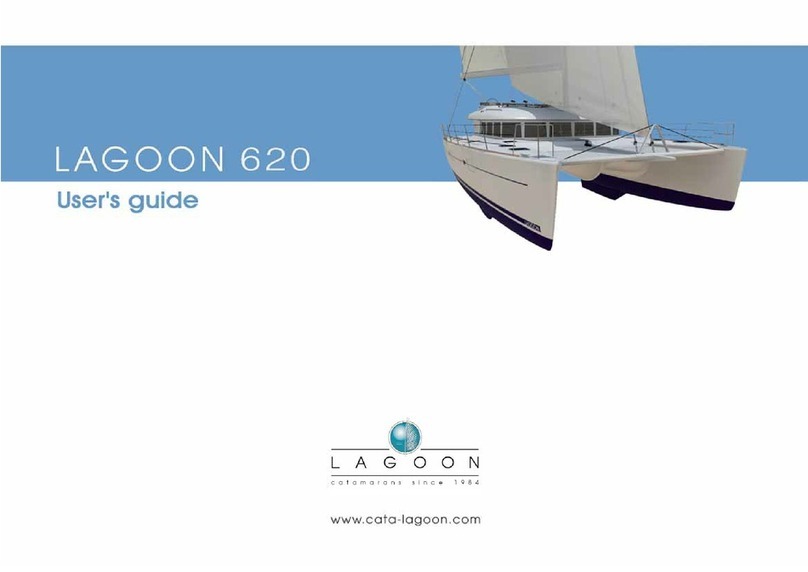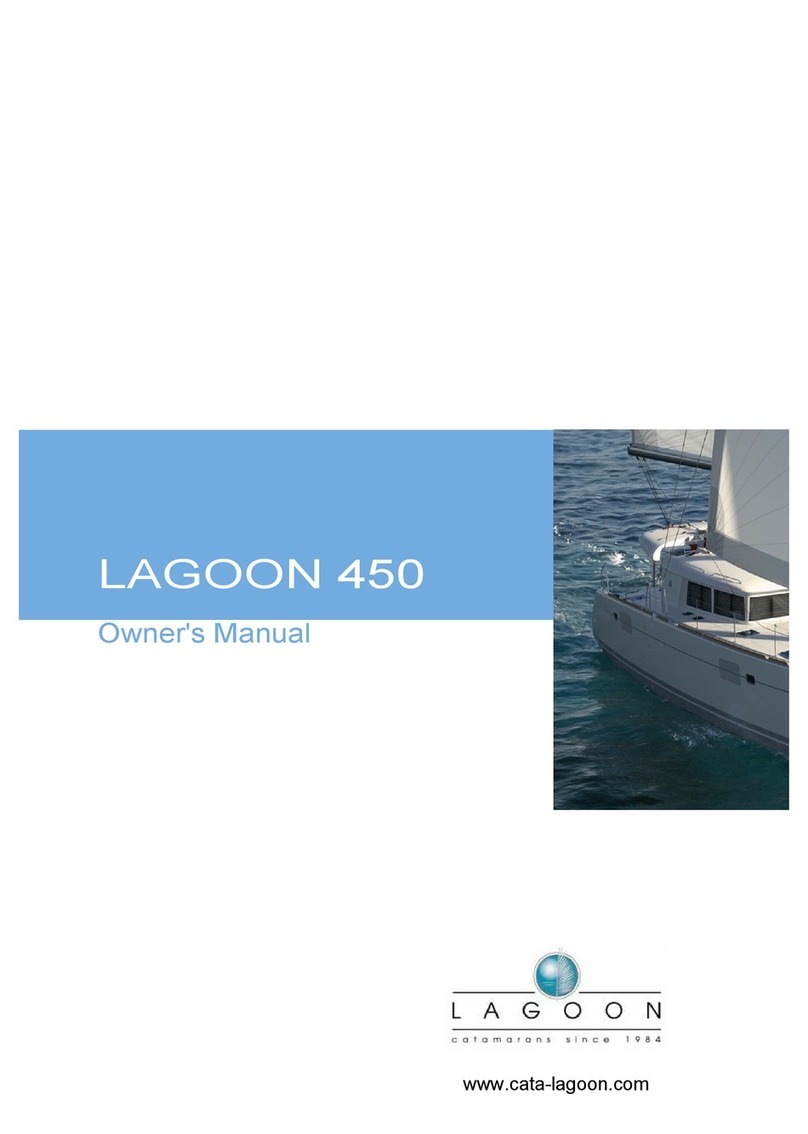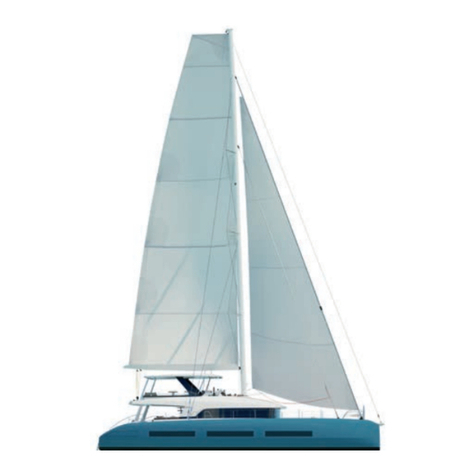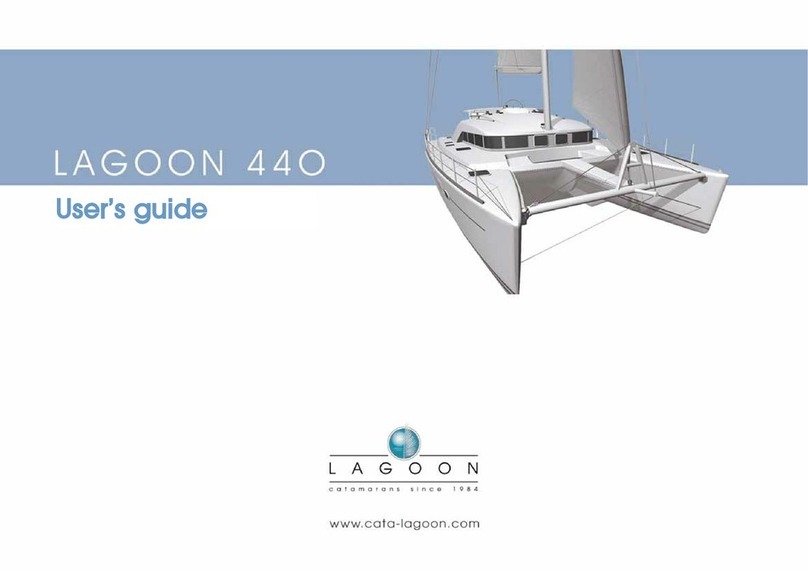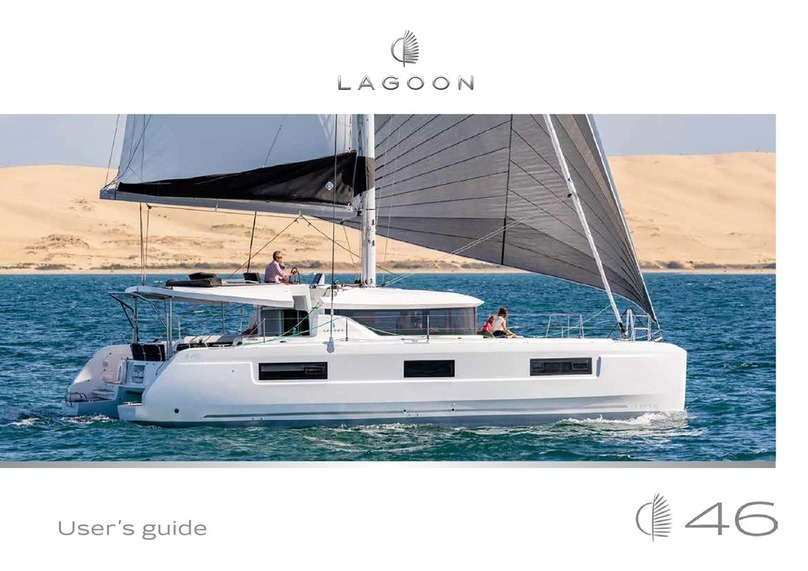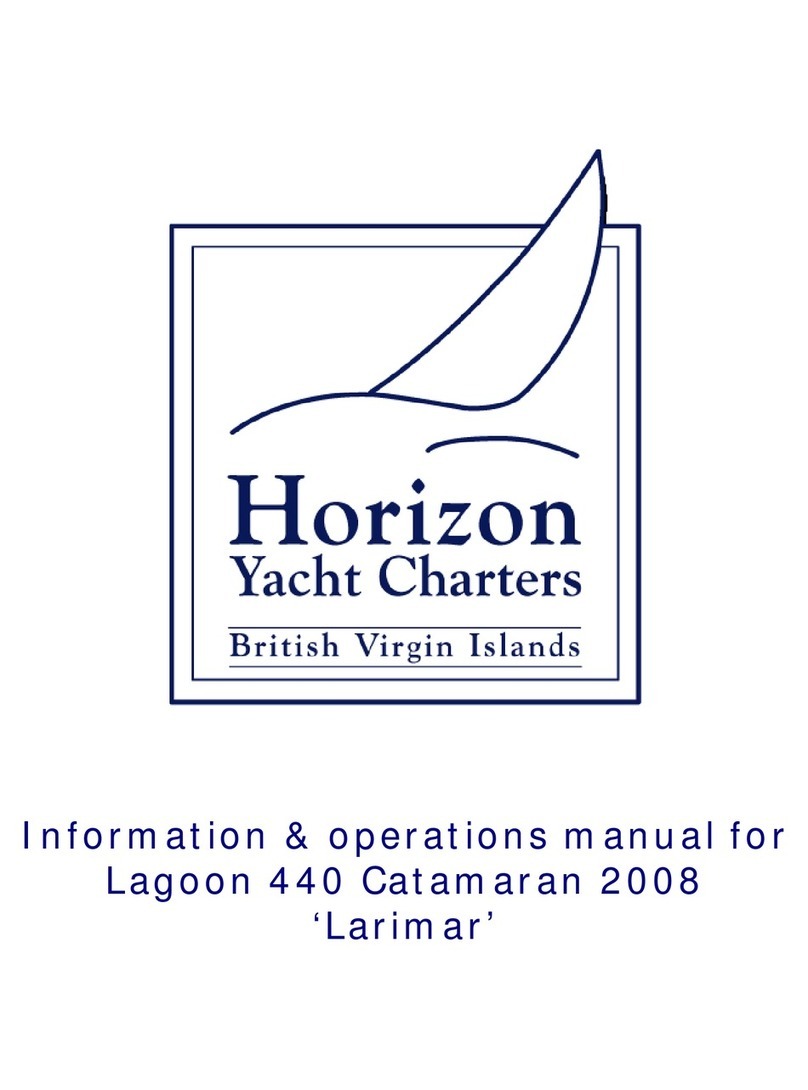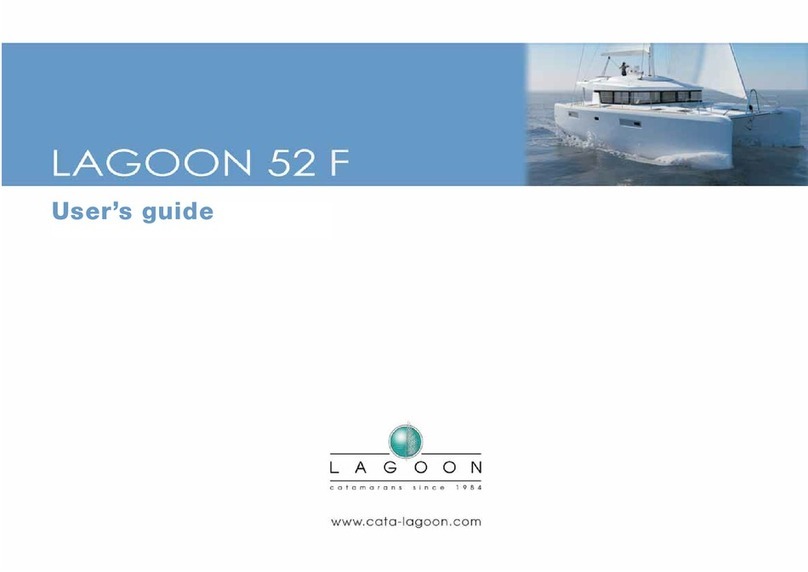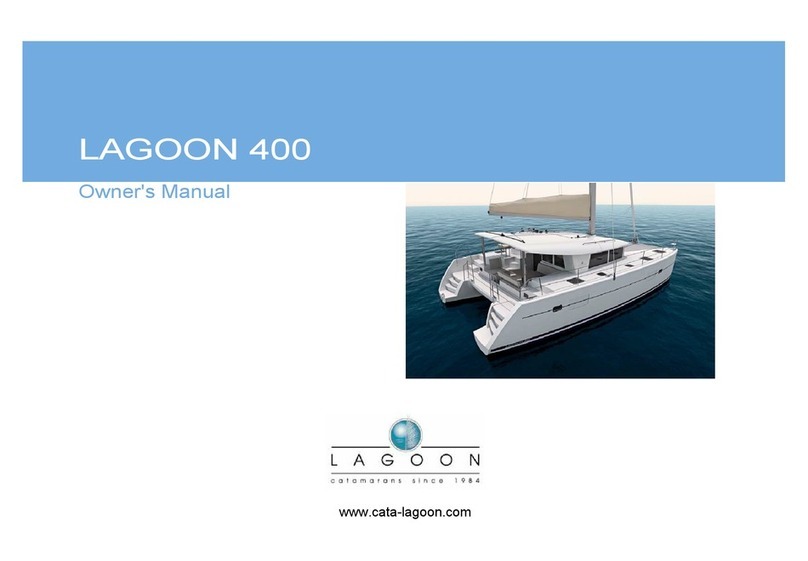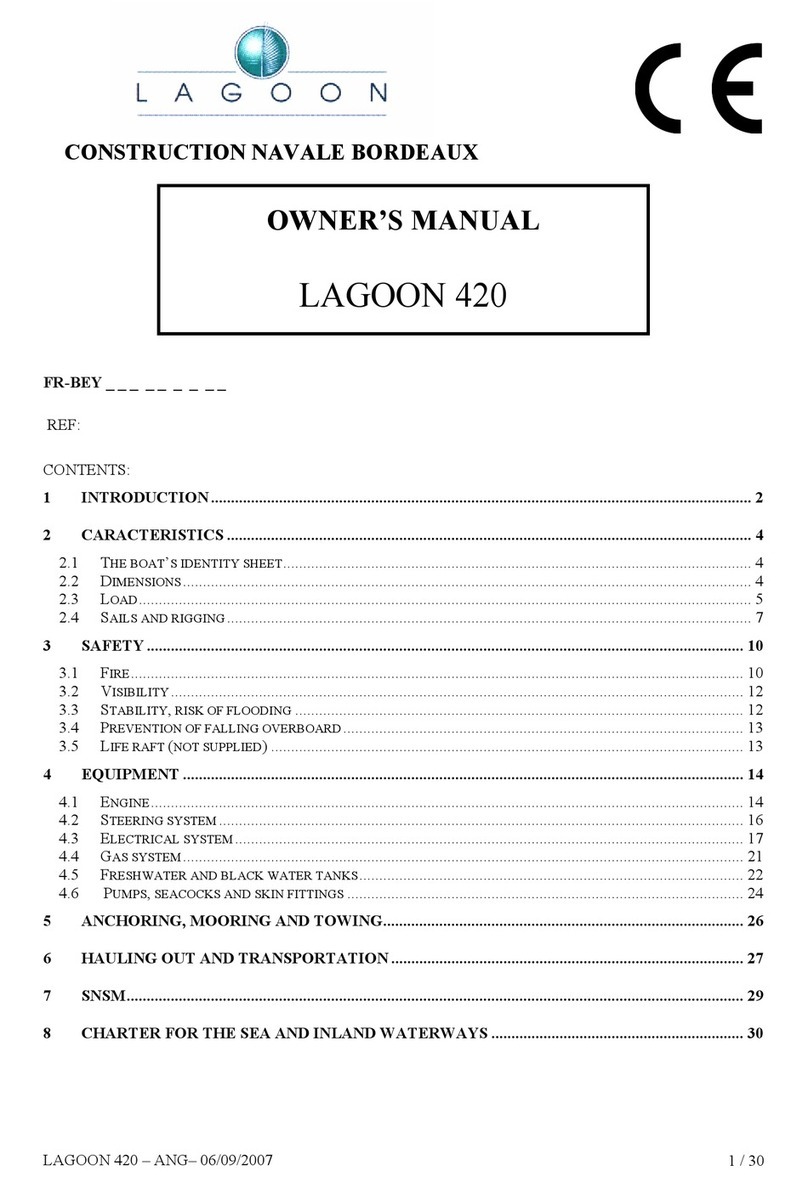Lagoon 380-S2 – ANG – 26/01/2005 2 / 31
1. INTRODUCTION
Dear Madam, dear Sir,
You have just taken delivery of your new LAGOON, and we would first of all like to thank you for
your confidence in choosing one of our products.
A LAGOON is built to last: each boat is the subject of attentive care down to the slightest details, from
her design until she leaves the factory and is launched, so that she will provide you with the many years of joy
that you expect from her.
This manual has been drawn up to help you use your boat in safety and with pleasure. It contains details
about the boat, the equipment supplied or fitted, her systems and information on their use. Some of this
equipment may be offered as an option. Read it carefully and familiarise yourself with the boat before using her.
Even when your boat has been accordingly categorised, the conditions of sea and wind corresponding to
design categories A, B and C vary from strong storm to severe conditions, open to risks of abnormal waves and
gusts, and are consequently dangerous conditions, where only an experienced crew, physically fit and well
trained, manoeuvring a well maintained boat may sail satisfactorily.
Make sure that the forecast wind and sea conditions correspond with the design category of your boat, and that
you and your crew are capable of manoeuvring the boat in those conditions.
This owner s manual is not intended to be a course on sailing safety or seamanship. If this boat is your
first boat or if you are changing to a type of boat you are not familiar with, for your comfort and safety, make
sure you get experience on manoeuvring and using her before taking command. Your dealer, national sailing
federation or powerboating federation or your yacht club will be delighted to direct you to competent sailing
schools or instructors in the region.
This owner s manual is not a detailed maintenance or repair guide. In case of difficulty contact the
manufacturer of the boat or one of its representatives.
Always use the services of an experienced professional for maintenance or the fitting of accessories.
The modifications that might affect the safety characteristics of the boat should be evaluated, carried out and
documented by competent people. The manufacturer of the boat cannot be held responsible for modifications
that it has not approved.
NOTE : Any change in the weight distribution on board (for example the addition of a raised fishing platform,
a radar, a furling mast, a change of engine, etc.) can effect the stability, the trim and the performance of your
boat.
PLEASE KEEP THIS MANUAL IN A SAFE PLACE AND HAND IT TO THE NEW OWNER IF YOU
SHOULD SELL THE BOAT.







